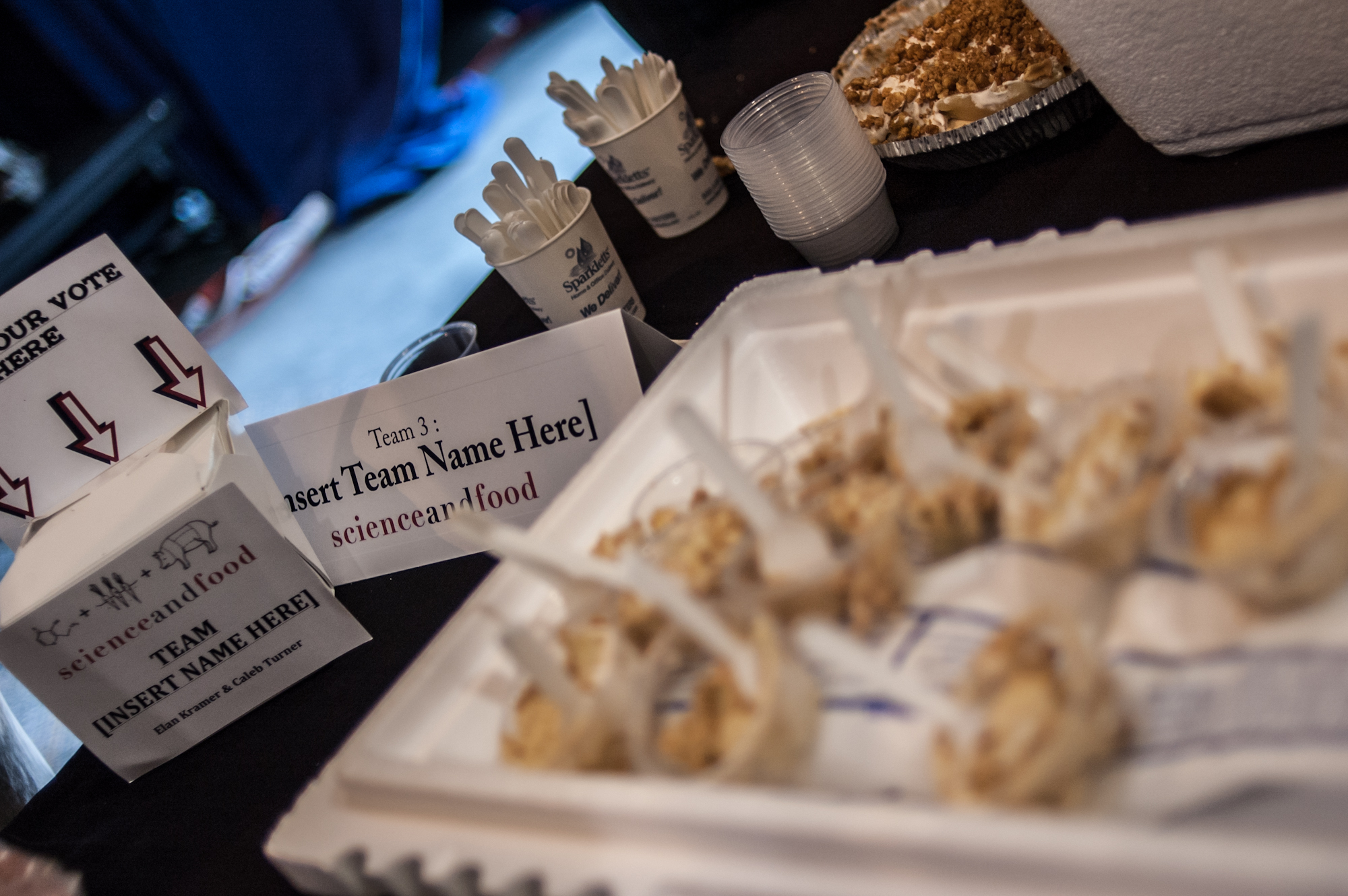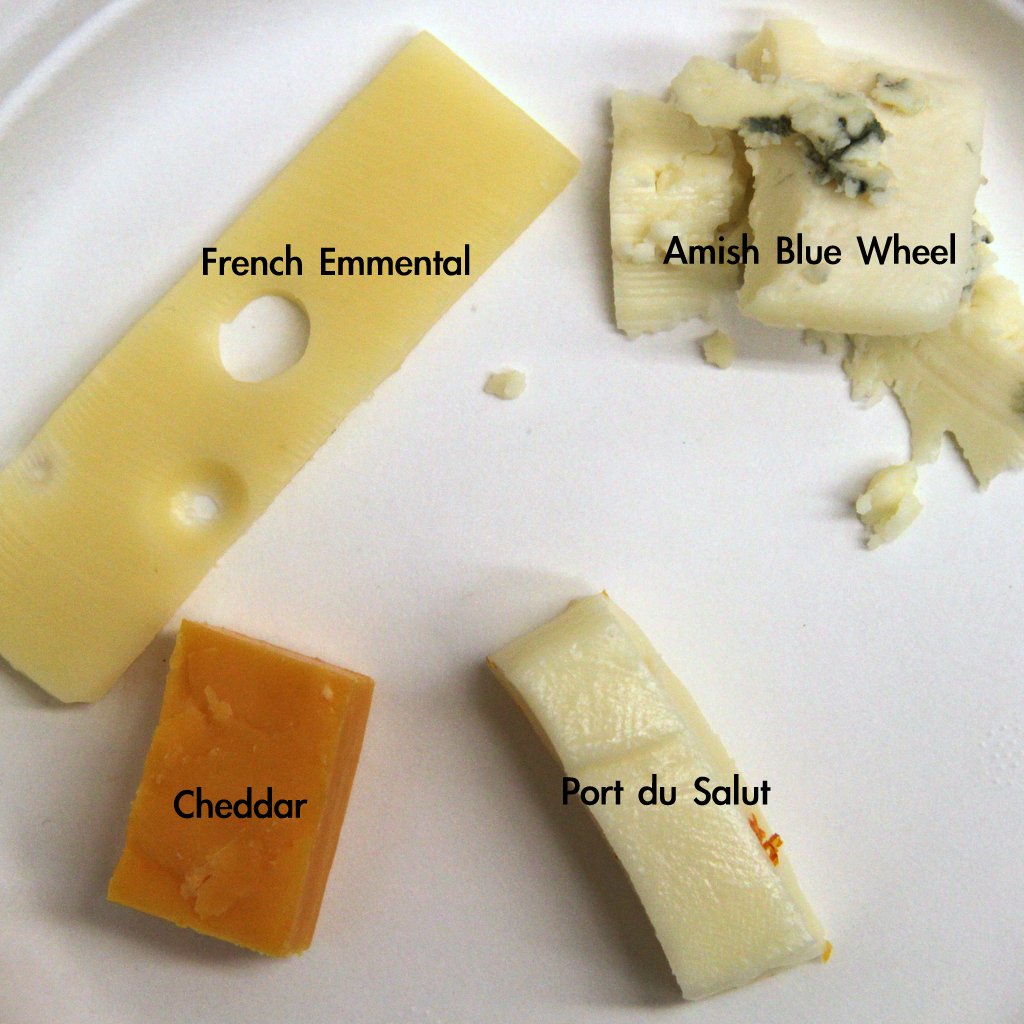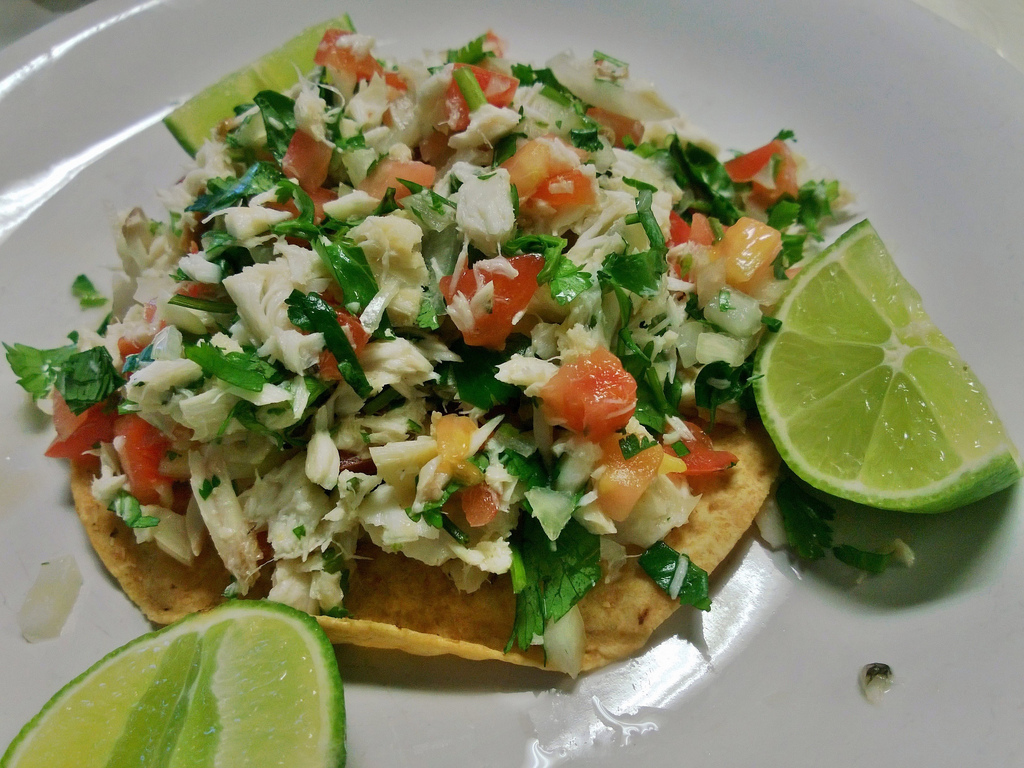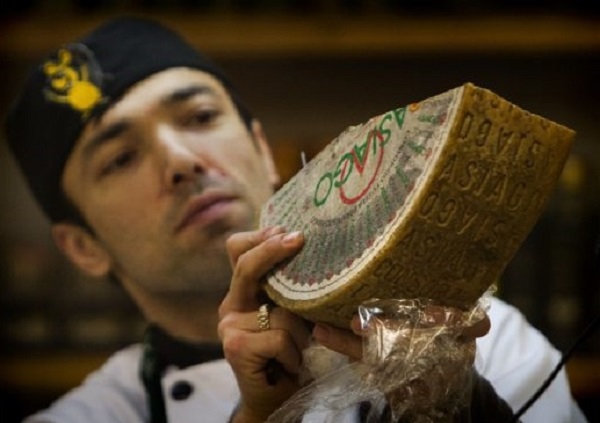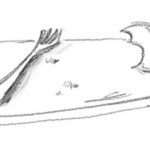Ricotta Cheese
Protein networks are responsible for the structure and mechanical properties of many foods such as eggs and meat. Even bread gets its chewy texture from the formation of springy gluten protein networks. As we will see in this recipe, protein network formation is vital for the successful production of cheese.
Milk, the primary component of cheese, is made up of fat globules, the sugar lactose, and a variety of proteins that can be divided into two categories: whey proteins and curd proteins. The most prevalent proteins in milk are curd proteins called caseins, comprising approximately 80% of the total milk protein. Casein proteins are not particularly well structured [1] and gather together into large, calcium-rich assemblies called “micelles.” Casein proteins at the surface of each micelle expose short negatively charged regions that improve micelle solubility and prevent multiple micelles from clumping together [2,3].
Caseins are remarkably heat stable, even at temperatures as high as 140˚C, and therefore require additional methods to promote curd formation. Milk curds can be formed by using special enzymes or by lowering the pH of the milk. Chymosin (a digestive enzyme found in rennet) selectively removes charged regions from the surface casein micelles; altering the exposed charge of the casein micelles by causes them to clump together to form curds. The addition of acid neutralizes the negative charges on the surface of casein micelles, causing them to clump together. Acid can also solubilize the calcium phosphate “glue” holding micelles together and eventually cause casein micelles to disassemble completely [2,5].
This recipe is a fast and simple way to make cheese at home. Ricotta (“re-cooked” in Italian) is traditionally made from whey, the liquid that remains when curds have been formed and separated during a previous round of cheese-making. A true Italian ricotta therefore contains very little casein and is instead made by coagulating leftover whey proteins. Because this recipe starts with milk instead of whey, it produces a soft, spreadable cheese reminiscent of ricotta but more similar to Indian paneer or Mexican queso blanco.
Ingredients
1 gallon whole milk
1/3 cup plus 1 teaspoon distilled white vinegar
1/4 teaspoon salt
3 sprigs of rosemary or your favorite herb (optional, gives cheese extra flavor)
Procedure
1. Place all of the milk in large, heavy non-reactive pot on medium heat.
2. Add salt and rosemary (or any other herbs as desired). Stir briefly.
The salt will not only season the cheese but also help prevent spoilage [6]. Adding the herbs while the milk is being heated helps draw flavor compounds out of the herbs and into the milk.
3. Allow milk to heat up slowly, stirring occasionally.
Heating slowly will prevent burning and undesired curdling.
4. Soon you will notice steam start to form above the surface and tiny bubbles appearing on the milk. Take the pot off the burner once the milk reaches 80˚C.
Heating the milk above 70˚C will cause whey proteins to unfold or “denature.” These denatured proteins make up the skin that forms on heated milk. Denatured whey proteins will also stick to the still intact casein micelles [7]. These whey-casein complexes will form curds at a higher pH and in less time than pure casein micelles, presumably because the “sticky” whey proteins aid in network formation [8].
5. Remove rosemary or other herbs.
Herbs are meant only for flavoring the cheese. By now, flavor molecules from the herbs have already been infused into the milk and the remaining solid herb pieces are no longer needed in the cheese.
6. Add the vinegar and stir gently for one minute. Curds will begin to form immediately. Cover with a dry clean dish towel or lid and allow the mixture to sit undisturbed for at least 1.5 hours.
Vinegar, which is really dilute acetic acid, will help the milk curdle by further denaturing the whey proteins and neutralizing negative charges at the surface of casein micelles. As the surface charges are neutralized, the whey-casein complexes will aggregate into larger, branched protein network and form visible curds [9].
7. When the ricotta has rested for 1.5 hours or more, dampen a piece of cheesecloth and place it inside a colander. Place the colander inside of a larger pan to catch the drain-off. With a slotted spoon, ladle out the ricotta into the prepared colander. Let it drain for 5-10 minutes.
The liquid draining from the ricotta is called whey, not to be confused with the whey proteins that have been incorporated into the solid cheese curds. Removing the liquid whey gives a more solid cheese. Softer cheeses like cottage cheese contain more whey than most cheeses. Harder cheeses such as fontina and parmesan require additional preparation steps to remove even more whey.
8. Lift the cheesecloth up by the four corners and twist gently. If the liquid runs clear, squeeze a little more. Stop squeezing when the liquid appears milky. The final texture of your ricotta should be soft and spreadable but not loose and runny.
Squeezing helps remove additional liquid whey, but be careful not to squeeze too much! Removing too much whey will leave your ricotta dry and unappetizing.
9. Serve with crackers and enjoy your homemade cheese!
Online Resources
- Recipe adapted from “Home-Made Ricotta”
- The Food Lab: Fresh Ricotta in Five Minutes or Less
- “Dairy Chemistry and Physics” from University of Guelph
- “Cheese Making Technology” from University of Guelph
More from On Food and Cooking
More on milk biochemistry:
- McGee, Harold. On Food and Cooking. Scribner, 2004. (16–21).
More on cheese making:
- McGee, Harold. On Food and Cooking. Scribner, 2004. (51–67).
References Cited
- Holt C, Sawyer L (1993) Caseins as rheomorphic proteins: interpretation of primary and secondary structures of the ? S1-, ?- and ?-caseins. Journal of the Chemical Society, Faraday Transactions 89: 2683. doi:10.1039/ft9938902683.
- Fox PF, Kelly AL (2012) Chemistry and Biochemistry of Milk Constituents. In: Simpson BK, editor. Food Biochemistry and Food Processing. Oxford, UK: Wiley-Blackwell. pp. 442–464. Available:http://doi.wiley.com/10.1002/9781118308035.ch24. Accessed 13 January 2013.
- Fox PF, Brodkorb A (2008) The casein micelle: Historical aspects, current concepts and significance. International Dairy Journal 18: 677–684. doi:10.1016/j.idairyj.2008.03.002.
- Dalgleish DG, Spagnuolo PA, Douglas Goff H (2004) A possible structure of the casein micelle based on high-resolution field-emission scanning electron microscopy. International Dairy Journal 14: 1025–1031. doi:10.1016/j.idairyj.2004.04.008.
- Kelly AL, Fox PF (2012) Biochemistry of Milk Processing. In: Simpson BK, editor. Food Biochemistry and Food Processing. Oxford, UK: Wiley-Blackwell. pp. 465–490. Available:http://doi.wiley.com/10.1002/9781118308035.ch25. Accessed 13 January 2013.
- Guinee TP, Fox PF (2004) Salt in Cheese: Physical, Chemical and Biological Aspects. Cheese: Chemistry, Physics and Microbiology. Elsevier, Vol. 1. pp. 207–259. Available:http://linkinghub.elsevier.com/retrieve/pii/S1874558X04800691. Accessed 20 January 2013.
- Haque Z, Kinsella JE (1998) Interaction between heated κ-casein and β-lactoglobulin: predominance of hydrophobic interactions in the initial stages of complex formation. Journal of Dairy Research 55: 67. doi:10.1017/S0022029900025863.
- Lucey JA, Singh H (1997) Formation and physical properties of acid milk gels: a review. Food Research International 30: 529–542. doi:10.1016/S0963-9969(98)00015-5.
- Lucey JA, Munro PA, Singh H (1999) Effects of heat treatment and whey protein addition on the rheological properties and structure of acid skim milk gels. International Dairy Journal 9: 275–279. doi:10.1016/S0958-6946(99)00074-6.
 About the author: Liz Roth-Johnson is a Ph.D. candidate in Molecular Biology at UCLA. If she’s not in the lab, you can usually find her experimenting in the kitchen.
About the author: Liz Roth-Johnson is a Ph.D. candidate in Molecular Biology at UCLA. If she’s not in the lab, you can usually find her experimenting in the kitchen.



